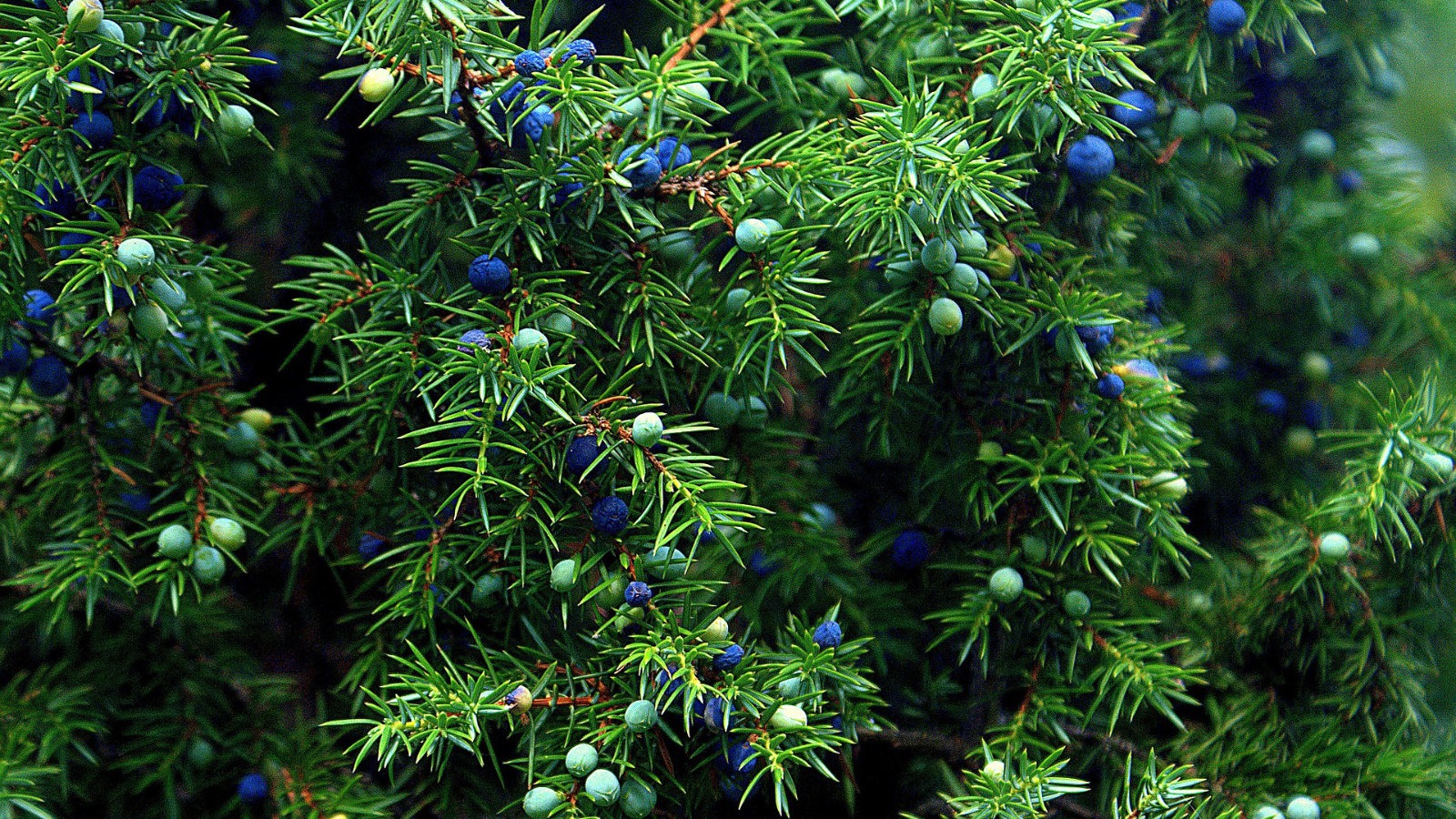For those with a small garden Juniper is a good option to consider. It’s an evergreen conifer and can be either a shrub or a small tree. It’s also slow growing so maintenance of the tree shouldn’t be too taxing. It can be recognised by needle like pine leaves not much longer than your finger nail, and small berries which are green when unripened, and dark blue/purple colour when ripened. These berries are slow to ripen so can be seen in different stages all year round. The bark of the tree has a flaky grey appearance which can be peeled.
Latin name: Juniperus communis
Overview
Juniper has male and female plants (dioecious) and it relies on the wind for pollination. You can witness this for yourself by touching the male flowers which will release pollen into the air. The male flowers are of a yellow colour and are located near the end of a branch. These flowers will form during spring and with the help of the wind the pollen will find its way to a female tree, and pollinate her flowers. The female flowers are the ones which will become the blue/purple berries. These berries can take up to 2 years to ripen, which is why you can see green berries all year round on juniper.
In the garden
Juniper is a popular garden conifer and considering it can be grown to many different shapes and sizes, it’s definitely one to consider for gardens of all shapes and sizes. If birds are you thing then this is a tree you should go for. The berries provide food and also shelter as it can be a dense bush with foliage all year round. This should help the birds hide from the clutches any local cats in the neighbourhood. You can spot Song thrushes (Turdus philomelos), Mistle thrush (Turdus viscivorus) and if your lucky the Goldcrest (Regulus regulus). It’s also a good tree for spotting spiders as many insects find their way to the tree, so keep an eye out for the little creatures too.
Did you know?
Juniper has the largest range of any the woody plant. It can be found in North America, Europe, Asia, and the Arctic.
